Therapeutic Approach and Services
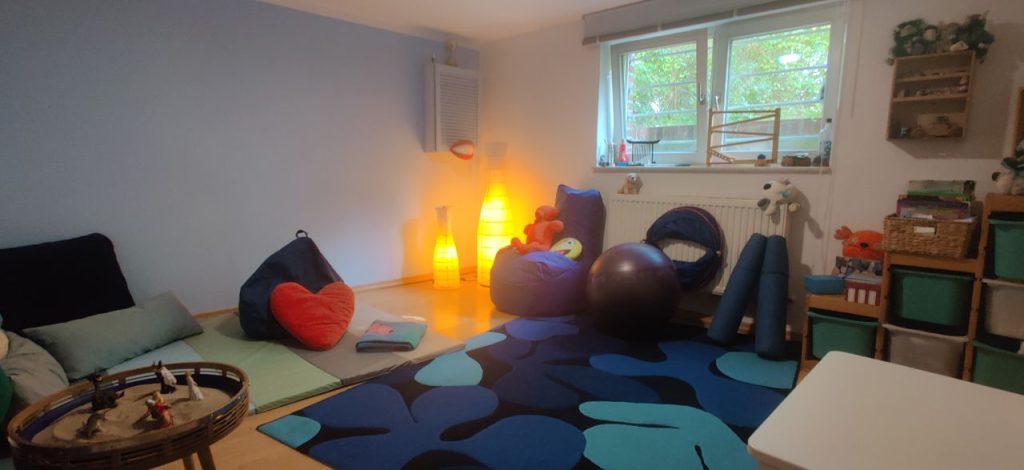
Based on the focus of needs for you, your child and your family, I offer a combination of therapeutic services based on my training in 1) Gestalt Therapy, 2) Polyvagal Regulation Therapy, 3) Mindfulness and Self Compassion Training within the framework of 4) Cognitive Behavior Therapy (CBT), specifically utilizing as indicated ERP (exposure and response prevention) strategies or DBT (dialectical behavior therapy) including elements of polyvagal regulation and mindfulness techniques to support emotional regulation, self awareness and compassion (see details below):
1) Gestalt Therapy
Gestalt therapy places emphasis on gaining awareness of the present moment and the present context. The approach is humanistic and holistic (including mind, body, and culture) that is focused on a person’s present life and challenges rather than delving into past experiences. It is present-centered in the here-and-now. There is a focus on personal responsibility for action and the value of “I–thou” relationship in the therapy process and relationship to fuel personal agency and transformation of experiences and reactions. Healing is a capability and resource all people have and experienced personal or relational dysfunctionality is recognized as a past healthy response to an unhealthy situation which can be reexamined and reevaluated in current / new relationships.
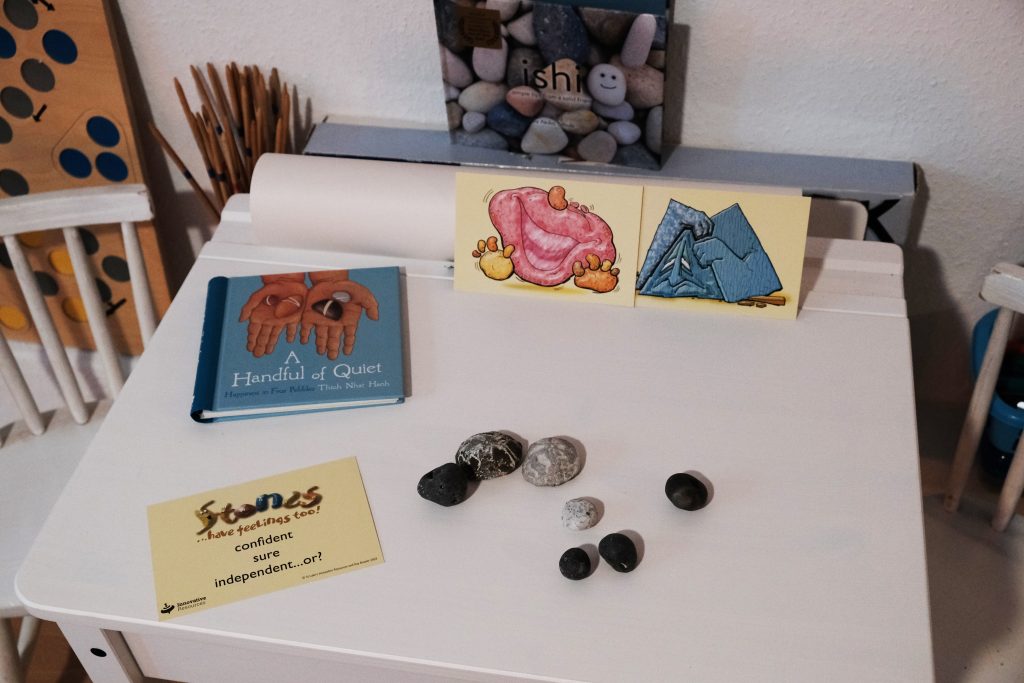
The goal of Gestalt therapy is to teach people to become aware of significant sensations within themselves and their environment so that they respond fully and reasonably to situations. It emphasis gaining awareness of the present moment and the present context. Through therapy, people learn to discover feelings that may have been suppressed or masked by other feelings and to accept and trust their emotions.
Gestalt therapy is an awareness practice (related to “mindfulness” in other clinical domains). Perceiving, feeling and acting are understood to be conducive to interpreting, explaining, and conceptualizing (the hermeneutics) personal experience. A distinction between direct experience versus indirect / secondary interpretation is developed in the process of therapy. The client learns to become aware of what he or she is doing and that triggers the ability to risk a shift or change.
Gestalt therapy is distinct because it moves toward action, away from mere talk therapy, and for this reason is considered an experiential approach. Through experiments, the therapist supports the client’s direct experience of something new, instead of merely talking about the possibility of something new through role play, guided imagination and a variety of creative materials especially with children.


Specifically, with children and adolescents, creative medium and expressive techniques are employed to foster experimenting with new experiences and linking these to past and current relationships (e.g., drawing, clay, sand table, role playing, storytelling, word games, fort building, imagination journeys, etc.) according to the methodology of Violet Oaklander and Ruth Lampert.
2.) Polyvagal Regulation Therapy and the Community / Trauma Resilience Model
“If you want to improve the world, start by making people feel safer.”
― Stephen Porges
In this vein, it is my intention to support individuals building up a set of wellness skills based on the Community & Trauma Resiliency Models (CRM/TRM)® to counter chronic stress related experiences and life styles and learn how to become aware and learn how to stay in and expand your Resilient Zone. Science tells us that when we exercise our resiliency muscle by practicing wellness skills, our wellbeing expands. We have learned what we pay attention to grows. If you practice such skills regularly, they can help you feel better in mind, body, and spirit. “CRM’s goal is to help to create “trauma-informed” and “resiliency-focused” (TMR) communities that share a common understanding of the impact of trauma and chronic stress on the nervous system and how resiliency can be restored or increased using this skills-based approach” (see TRI). These skills include:

- Tracking utilizing the Resilient Zone Scale (RZS) is a way to talk to the nervous system and help it to come back into balance.
- Resourcing by naming things in your life that are uplifting, peaceful, joyous, or calming to connect to sensations of wellbeing.
- Grounding as a mindfulness technique of making direct contact of the body with the ground or a surface that provides support to the body to help stay in the present moment.
- Gesturing with self-calming, releasing, spiritual or wellbeing spontaneous movements to underline body memories that can help you strengthen your Resilient Zone.
- Help Now strategies for managing sensations if your nervous system gets hijacked and you are bumped into your Low or High Zones and help you get back into your Resilient Zone.
- Shift and Stay skills help in shifting attention from unpleasant or distressing sensations to a place in the body that is neutral, calming, balancing or pleasant.
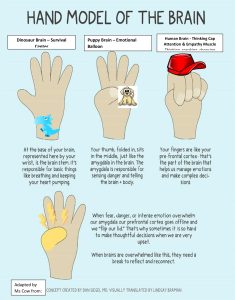
Polyvagal theory in psychotherapy offers a model for these skills based upon co-regulation as an interactive process that engages the social nervous systems of both therapist and client. Social engagement provides experiences of mutuality and reciprocity in which we are open to receiving another person, as they are. It moves clients past awareness of perception, feelings and thinking into the awareness of neuroception; the process that the brain undergoes to immediately recognize danger and keep us safe. Dr. Stephen Porges offers the term “neuroception” to account for the ways in which our nervous system responds to internal and external cues of safety or danger. Porges describes neuroception as the function of the autonomic nervous system in our body scanning our environment for cues of safety or danger. It is constantly steering our perception, feelings, actions and ability to be in relationship below our subconscious.
Adding the CRM/TRM lens and a polyvagal perspective to clinical practice draws the autonomic nervous system directly into the work of therapy, helping clients re-pattern their nervous systems, build capacities for regulation, co-regulation and create autonomic pathways of safety and connection, which is a prerequisite to readiness to learn and engage in relationships. As we journey through life engaging with our world, there are inevitably moments when we feel safe and others in which we will feel discomfort, stress or danger. CMR strategies combined with Polyvagal insights affirm and reconfirm that this space or resiliency zone is fluid for us and we can move in and out of it within a hierarchy of responses we can become aware of and use.
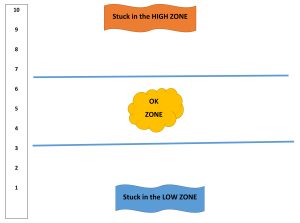
Some ways of applying Polyvagal Theory in Everyday Life:
- Noticing whether or not you are expressing safe and supportive social cues.
- Recognizing what “triggers” and “glimmers” affect your sense of safety and ability to choose and respond to rather than react
- Becoming aware and be able to name the “fight, flight or freeze” patterns to heightened emotional or stress situations (“if you can name it, you can tame it”).
- Identifying what is happening with your body, face, muscle tone, and breath in trigger and glimmer situations.
- Utilizing mindfulness techniques to STOP, NOTICE, FEEL, and DECIDE what to do next in stress situations e.g., taking 1-3 deep inhales and slow exhales, 7/11, Petal, Box or Waltz breathing.
- Reengaging conversation, movements and introducing skills to help learn when you feel the shift to regulation.
3.) Mindfulness and Self Compassion Training

Mindfulness is the continuous practice of deeply touching every moment of daily life. To be mindful is to be truly present with your body and your mind, to bring harmony to your intentions and actions, and to be in harmony with those around you.
― Thich Nhat Hanh
Mindful living is ‘being alive and knowing it!’ ― Jon Kabat-Zinn
Mindfulness practices help train your attention to be more aware of what is actually happening, rather than worrying about what has happened or might happen. We learn to bring greater curiosity to whatever it is we experience.
The MiSP .b Mindfulness approach: ‘.b’ stands for ‘stop’ and ‘be’, capturing an important life-skill: being able to step back from the busy-ness of habitual activity and the relentless chatter of the mind. This offers greater space and clarity to make choices that support well-being in many ways.
Mindfulness trains us to direct our attention to whatever is happening in the present moment: our breathing, other physical sensations, thoughts, emotions, or even everyday activities like walking and eating. This awareness means we can respond more skillfully to whatever the present-moment throws at us.
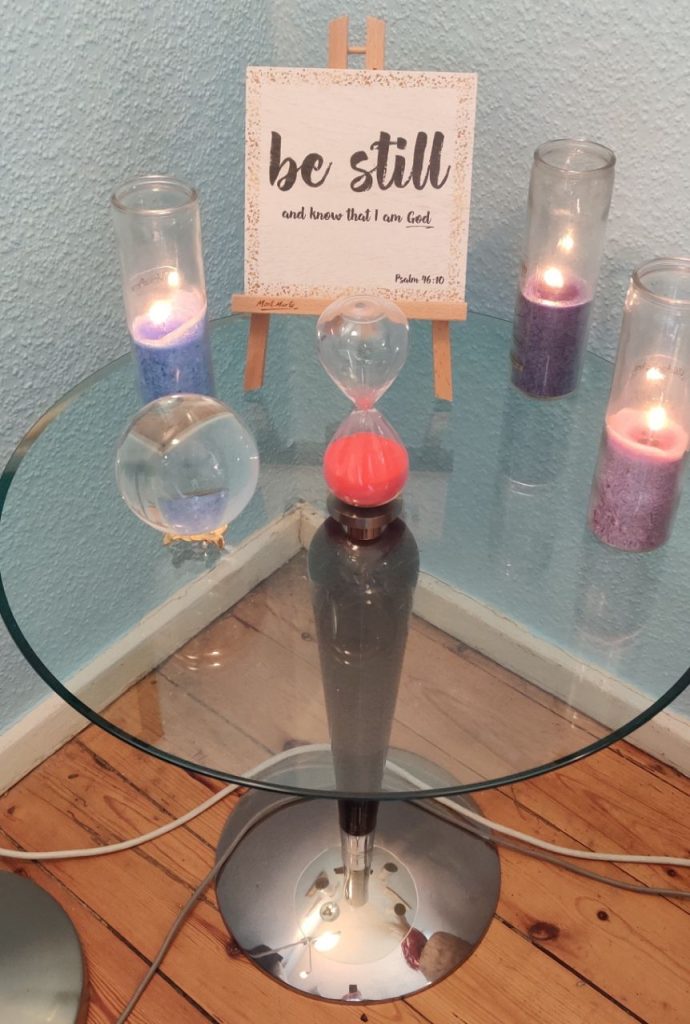
4.) Cognitive behavioral therapy (CBT / DBT / ERP)
Cognitive behavioral therapy (CBT) focuses on identifying and changing automatic negative thoughts that contribute to or enhance emotional experience, leading to heightened states like depression or anxiety. These spontaneous negative thoughts have a detrimental influence on not only mood but the ability to respond to new and challenging situations in our lives. CBT aims to help you recognize, identify and challenge unhelpful thoughts and to learn practical self-help strategies to learn new ways to respond.
Dialectical behavior therapy (DBT) focuses on building up emotional resilience and acceptance in the face of chronic stress or challenging life situations by incorporating mindfulness, interpersonal effectiveness, distress tolerance, self compassion, forgiveness and emotion regulation skills This is especially supportive for children/youth who experience difficulties with emotional regulation, episodes of extreme anxiety, anger, guilt, or shame. DBT can also support the treatment of post-traumatic stress disorders (PTSD) or if they are exhibiting risky or self-destructive behaviors (such as eating disorders, cutting addictions or substance use disorders).
Exposure and Response Prevention therapy (ERP) specifically focuses on exercises to “retrain the brain,” when obsessive thoughts and compulsive behavior responses are in the foreground of concern. By gradually exposing a child/youth to situations designed to provoke obsessions in a safe environment, they learn to confront triggers, become aware of sensations associated with them, lean into the feelings they provoke, stick with it, and resist the urge to engage in compulsive behaviors in response. ERP involves a commitment between child/youth/family and the therapist to work with and endure stressful, anxiety provoking situations; it doesn’t completely remove distressing situations and thoughts, but seeks to teach resilience and skills to embrace these situations with a more mindful, accepting and forgiving stance.
I use the Iceberg Model to help children/youth tangibly develop skills to choose to make changes in their behavior by illustrating and tapping into the levels of remembering, thinking/believing and resulting feelings affecting their words and actions.
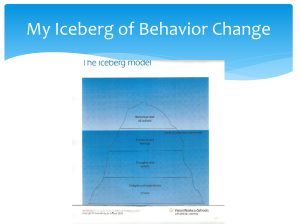
Some of the CBT techniques that I often use include the following 9 strategies:
- Cognitive restructuring or reframing is about looking at a situation, thought, or feeling from another angle or perspective, helping the child/youth discover, challenge, and modify or replace their negative, irrational thoughts with new associations.
- Guided discovery is a process that helps a child/youth reflect on thinking processes and develop a range of alternative perspectives.
- Exposure therapy invokes both an in vivo or imaginal confrontation with objects or situations experienced as fearful utilizing a with a fear index to gauge and regulate the experience.
- Successive approximation involves taking tasks that seem overwhelming and breaking them into smaller, more achievable steps, also referred to as scaffolding. Each successive step builds upon the previous steps so you gain confidence as you go, step by step; one step at a time.
- Journaling and thought records help especially youth to capture, evaluate, and restructure their negative automatic thoughts and feelings focusing on gratitude and self compassion aspects of their experience..
- Goal charts (also referred to as activity scheduling and behavior activation) can be employed to identify specific goals for the week and highlight successes and positive experiences and activities that are consistent with long-term goals your child/family want to live and overriding negative thoughts and memories.
- Behavioral experiments are planned experiential activities to test the validity of a belief. They are an information gathering exercise, the purpose of which is to test the accuracy of an individual’s beliefs (about themselves, others, and the world) or to test new, more adaptive beliefs.
- Progressive relaxation and stress reduction techniques include Mindfulness practices.
- Role playing allows children/youth to identify their own feelings surrounding a given situation while simultaneously experiencing how others may feel. These are used to promote experiences of reciprocity and empathy building.

